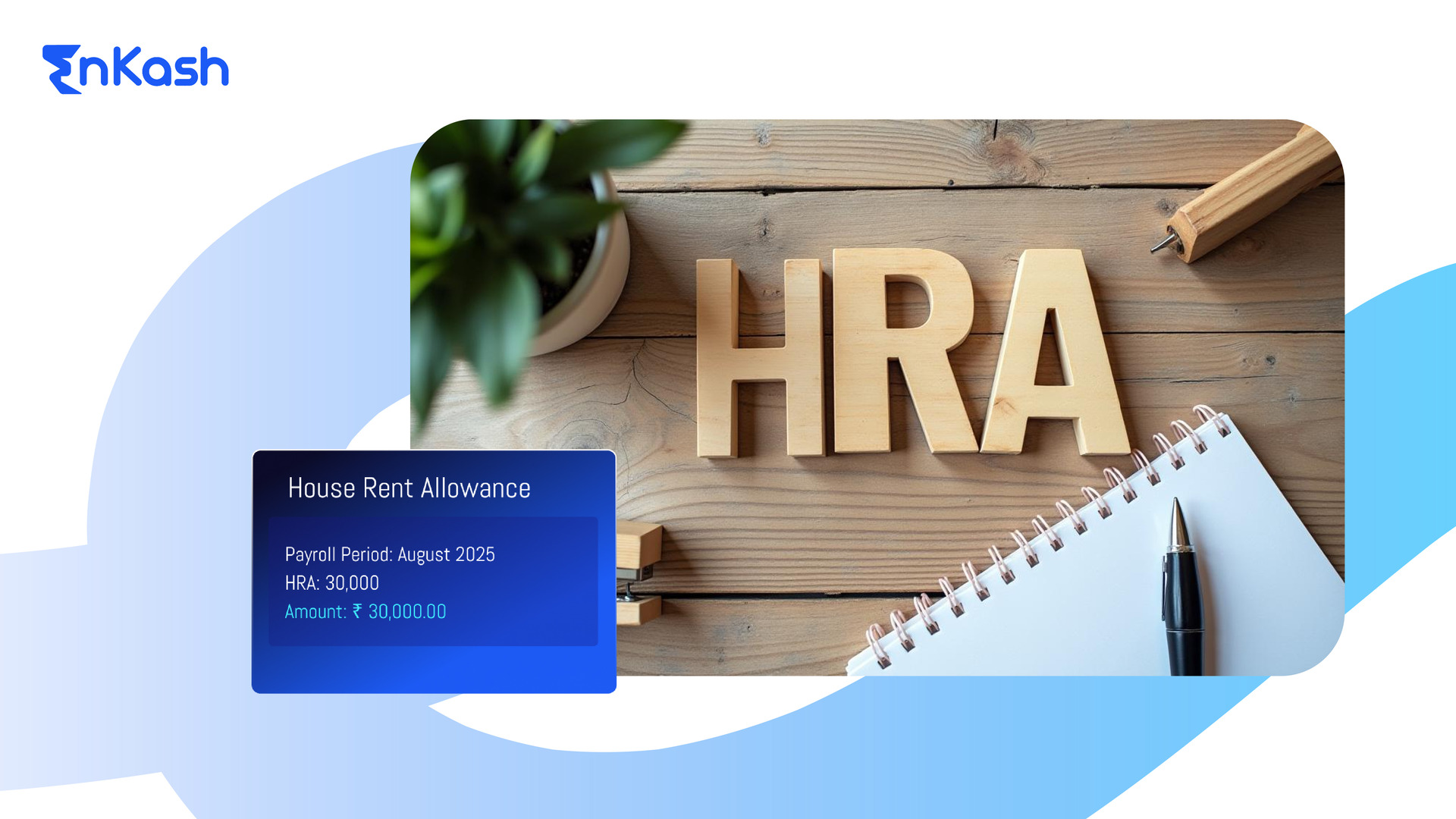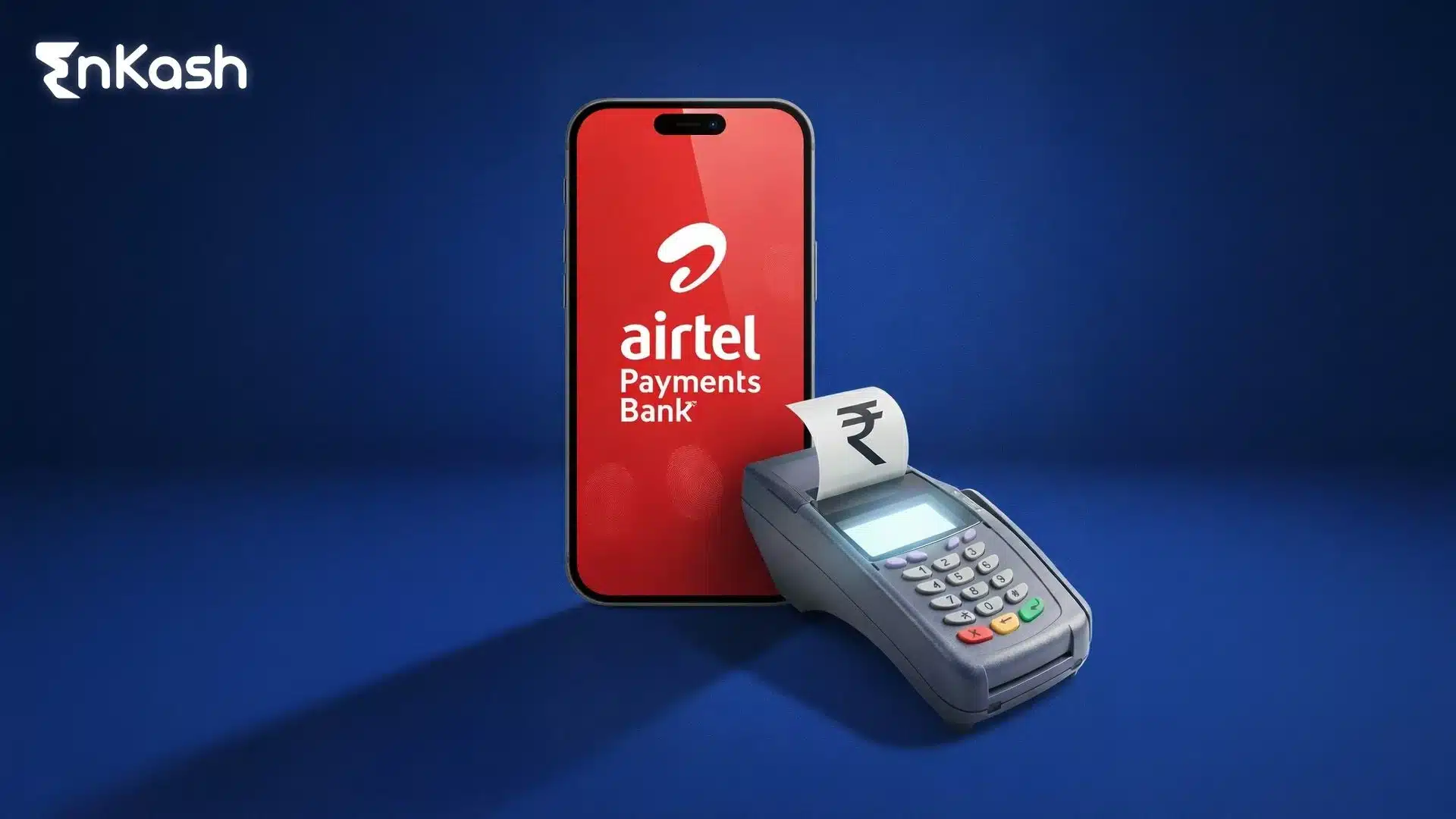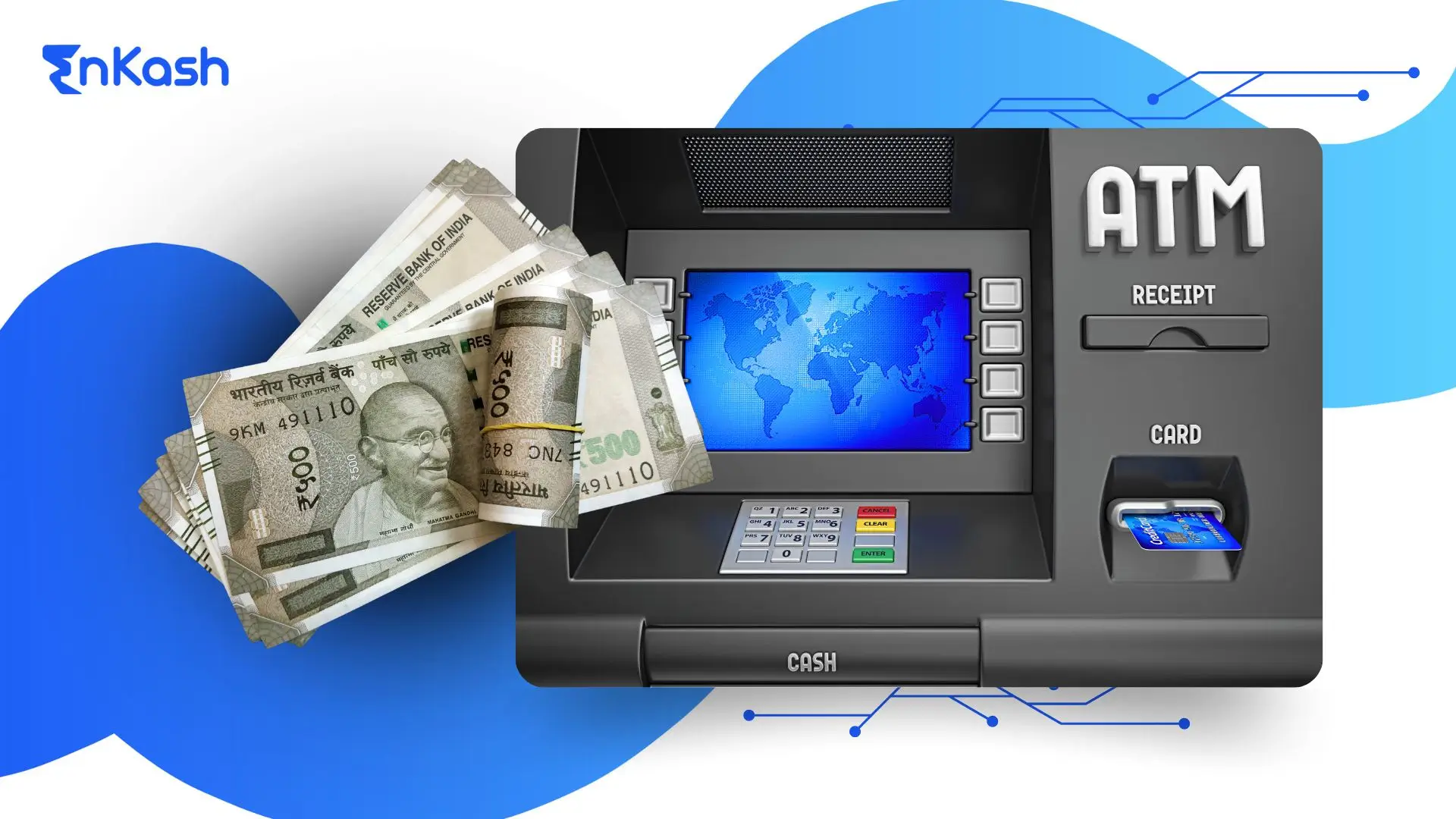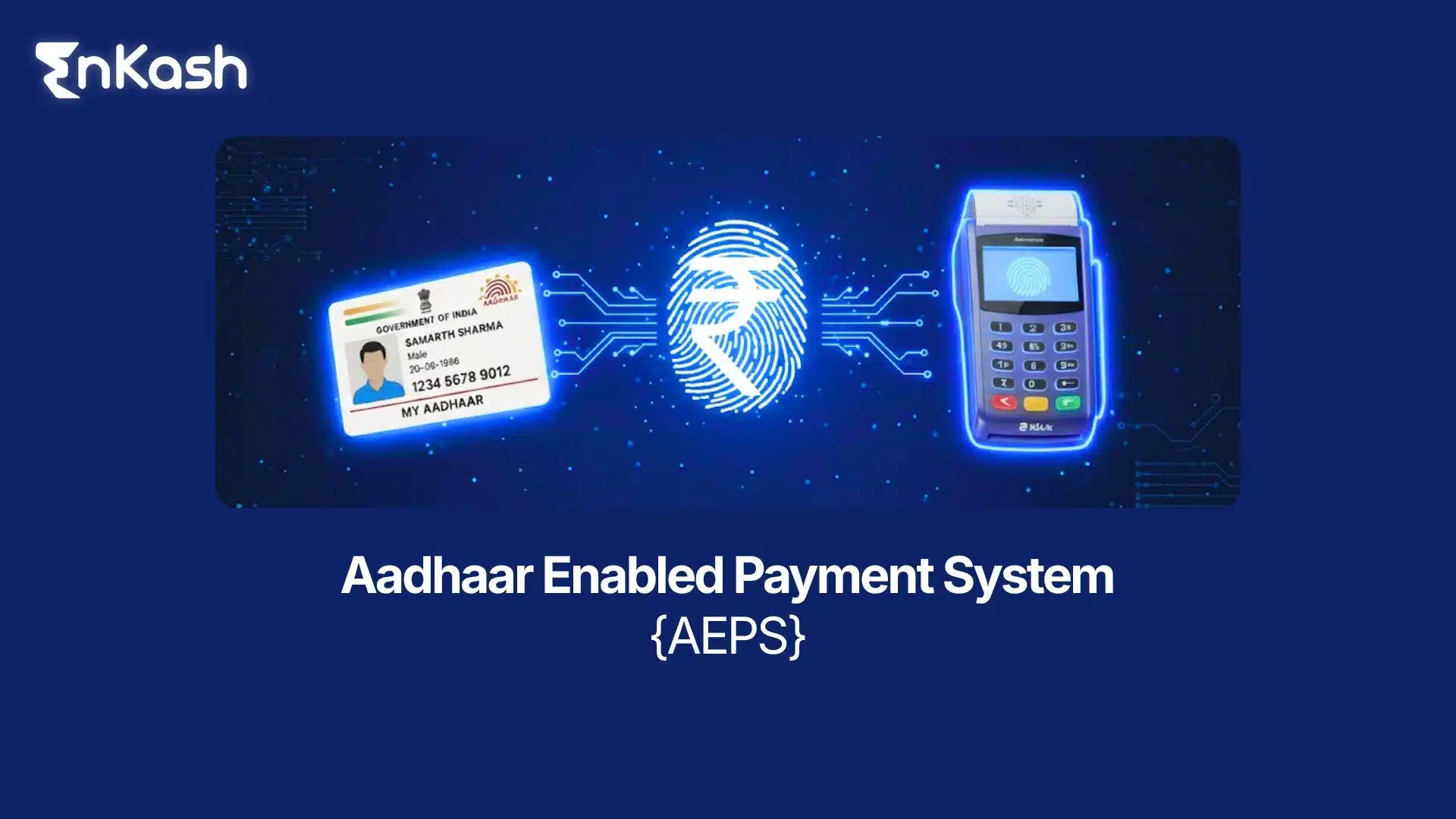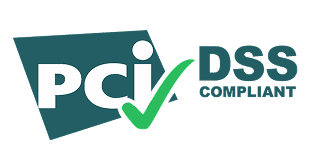House Rent Allowance (HRA) is one of the most common components of a salaried employee’s pay structure. It is designed to help employees meet their rental housing expenses.
What is HRA?
HRA stands for House Rent Allowance – a portion of your salary paid by your employer to cover the cost of renting a house. It is taxable under the Income Tax Act but can be partially or fully exempt if you meet certain conditions under Section 10(13A).
What is HRA in Salary?
HRA appears as a separate item alongside Basic Pay, DA (Dearness Allowance), and other components. Many employers set HRA as a percentage of basic, but there is no statutory 40%/50% rule for how much HRA must be paid. The 40%/50% figures apply to the exemption cap under Section 10(13A), not to the HRA amount your employer must provide.
HRA Component in Salary Structure
In India, House Rent Allowance (HRA) is a fixed part of your salary package, usually calculated as a percentage of your Basic Pay. HRA is shown as a separate earning in your payslip and is used to provide financial support for rented accommodation.
Key Points:
- HRA forms part of your Cost to Company (CTC) but presentation varies by employer
- It is eligible for tax exemption under Section 10(13A) if rent is actually paid.
- You must submit rent receipts or rental agreements to your employer for exemption.
HRA Percentage of Basic Salary in India
The HRA you receive depends on whether you live in a metro or a non-metro city:
City Type |
HRA Percentage of Basic Pay |
|---|---|
Metro Cities (Delhi, Mumbai, Chennai, Kolkata) |
50% of Basic Pay |
Non-Metro Cities |
40% of Basic Pay |
Pro Tip: For maximum tax benefit, keep rent paid higher than 10% of your basic salary and submit proper documentation.
HRA for Central & State Government Employees
Central and state government employees receive HRA as per DoPT (Department of Personnel & Training) rules.
- Rates vary by city classification: X (metro), Y (tier-2 cities), and Z (tier-3 towns).
- HRA is revised periodically based on Dearness Allowance (DA) slabs and government notifications.
- When DA crosses 50%, HRA rates are generally increased.
HRA Rules in India (DoPT Guidelines)
The Government of India has laid down clear rules to regulate HRA calculation and exemptions:
- HRA is paid only if an employee resides in rented accommodation.
- No HRA is paid if you live in a government-allotted house.
- Proof of rent is mandatory (rent receipt, rental agreement).
- PAN of the landlord must be provided if the annual rent exceeds ₹1,00,000.
- Employees can claim HRA exemption under Section 10(13A) by submitting Form 12BB.
HRA Calculation Formula
The HRA exemption is calculated using the least of the following three values:
- Actual HRA received from the employer
- Rent paid minus 10% of the basic salary
- 50% of basic salary (if living in metro cities) or 40% of basic salary (if living in non-metro cities)
Step-by-Step HRA Calculation Example
Suppose:
- Basic Salary = ₹50,000/month
- HRA Received = ₹20,000/month
- Rent Paid = ₹18,000/month
- City Type = Metro
Step 1: Rent Paid – 10% of Basic = 18,000 – 5,000 = ₹13,000
Step 2: 50% of Basic (metro) = 50% of 50,000 = ₹25,000
Step 3: Actual HRA received = ₹20,000
HRA Exemption = Minimum of (20,000, 13,000, 25,000) = ₹13,000
Thus, ₹13,000 will be exempt from taxable income, and the remaining ₹7,000 will be taxed.
Key Points to Remember
- HRA exemption is available only if you pay rent for accommodation not owned by you or your spouse.
- Always keep rent receipts for proof of payment.
- For HRA exemption purposes, only Delhi, Mumbai, Kolkata, and Chennai qualify as ‘metro’ for the 50% cap. All others (including Bengaluru, Hyderabad, Pune, etc.) are ‘non-metro’ for this rule.
HRA calculation ensures maximum tax benefits and better financial planning. Use an HRA calculator to simplify this process and avoid manual errors.
HRA Percentage of Basic Salary
The HRA percentage of basic salary depends on the city of residence of an employee. For the metro cities, it is generally 50% of the basic salary, while for non-metro cities, it is 40%. This percentage is decided by the employer and is specified in the salary structure given to the employee. It is important to be familiar with the HRA percentage of basic salary, as it directly affects the HRA calculation and the HRA tax exemption that can be claimed.
Example for exemption cap, not employer payout: with basic ₹60,000 in a metro, the upper cap used in the exemption calculation is 50% of salary = ₹30,000. Your actual HRA component is whatever your employer pays.
HRA Tax Exemption & Section in Income Tax
House Rent Allowance (HRA) is an important component of salary that can provide significant tax savings for salaried individuals. The Income Tax Act, 1961 outlines specific rules and exemptions under Section 10(13A).
HRA Exemption Under Section 10(13A)
Section 10(13A) of the Income Tax Act allows salaried employees to claim exemption on HRA received from the employer, provided they live in rented accommodation. The exemption is calculated based on a formula considering basic salary, HRA received, rent paid, and city of residence (metro or non-metro).
Salary Considered for HRA Exemption Calculation
For computing HRA exemption, the following components of salary are considered:
- Basic Salary
- Dearness Allowance (if forming part of retirement benefits)
- Commission (if linked to salary)
- Other allowances such as conveyance, medical, or special allowances are not included in HRA calculation.
Maximum HRA Exemption Allowed Under Income Tax Act
The HRA exemption is the least of the following three amounts:
- Actual HRA received from employer
- Rent paid minus 10% of salary
- 50% of salary for metro cities / 40% for non-metro cities
This ensures that employees get maximum permissible tax benefit while complying with the law.
HRA Tax Benefit With & Without PAN of Landlord
- With PAN of Landlord: No limit on claiming HRA exemption, subject to standard rules.
- Without PAN of Landlord: If rent exceeds ₹1 lakh per year, providing the landlord’s PAN is mandatory; otherwise, the exemption is restricted.
HRA Deduction Limit (Including If Rent < ₹50,000)
- If the monthly rent is less than ₹50,000, the exemption is calculated normally based on the least of the three amounts mentioned above.
- There is no fixed deduction; it strictly depends on rent paid, salary, and city classification.
Proper planning of HRA payments and documentation can maximize tax savings while staying compliant with the Income Tax Act. Using an HRA calculator helps in accurate calculation and avoids manual errors.
Factors Affecting HRA Calculation
Several factors can influence the calculation of HRA, including:
- City of Residence: As mentioned above, the city of residence is an important factor in deciding HRA exemptions since the cost of living in metro cities is higher than in tier II cities.
- Basic Salary: It is the basic salary that provides the base for the HRA calculation. A higher basic salary typically means a higher component of HRA. However, the tax benefit is not the entire HRA received but only a part of it, depending on other aspects like the rent paid and the place of living.
- Rent Paid: The actual rent the employee pays directly impacts the exemption amount.
If the rent paid is less, the HRA tax exemption will also be less. If the rent is high, it can result in a higher exemption, but it must be more than 10% of your basic salary. - Employer’s Policy: The employer’s policy is also an important factor for HRA calculation. Some employers may give you a fixed HRA component, while others may use certain criteria to calculate the HRA component. You need to understand your employer’s HRA policy to make the most of the tax benefits.
Eligibility & Conditions to Claim HRA
Claiming House Rent Allowance (HRA) under Section 10(13A) of the Income Tax Act is subject to certain eligibility criteria and documentation requirements. Understanding these rules ensures you can maximize your tax benefits without any compliance issues.
Who Can Claim HRA?
- Salaried Employees: HRA is primarily available to salaried individuals receiving it as part of their salary package.
- Self-Employed Individuals: HRA cannot be claimed by self-employed persons unless HRA is explicitly received from a company or organization as a salary component.
HRA Rules if Living with Parents or Relatives
- Living with Parents: HRA exemption can be claimed if you pay rent to your parents and have proper rent receipts.
- Living with Relatives: HRA can be claimed if you are paying actual rent to relatives (not dependent on your salary) and maintain proper documentation.
- Important: Simply living in a house without paying rent or paying rent to a spouse/children does not qualify for HRA exemption.
Conditions Where HRA Cannot Be Claimed
- You own the property you are living in.
- You do not pay rent, or the rent is below the prescribed threshold, without receipts.
- Rent paid to relatives can be claimed only if the arrangement is genuine,the rent is actually paid, and the landlord reports the rent as income. Otherwise, the claim risks disallowance on scrutiny.
Also Read: HRA Compliance Checklist
Documents Required to Claim HRA
To claim HRA exemption under Section 10(13A), it is essential to maintain proper documentation. The following documents are generally required:
- Rent Receipts: These should include the landlord’s name, address, PAN (if the annual rent exceeds ₹1 lakh), and the monthly rent paid.
Example:
- Rent Receipt
- Received from: [Employee Name]
- Rent Amount: ₹[Amount]
- For the month of: [Month/Year]
- Address of Property: [Full Address]
- Landlord Name & PAN: [Name & PAN if applicable]
Signature of Landlord
- Rental Agreement: A valid rental agreement signed by both the tenant and the landlord, mentioning rent amount, duration, and property details.
- PAN of Landlord: Mandatory if the annual rent exceeds ₹1 lakh, as per Income Tax rules. This helps in claiming the HRA exemption without any issues.
Maintaining these documents ensures smooth processing of your HRA claim and compliance with Income Tax regulations.
Importance of HRA in Salary Structure
The HRA plays an important role in an employee’s salary structure, especially for those living in rented properties. It aids them in meeting their living expenses and also provides significant tax deductions.
Since rent constitutes a significant portion of most employees’ monthly expenses, particularly those residing in metro cities, an exemption in HRA boosts their take-home pay. Employees in the higher tax brackets can maximize their tax savings.
Besides, if employees know how HRA works, they can make better housing choices. For example, if they know that renting has a greater impact on HRA exemption, they might decide to rent, which will reduce their tax burden the most.
Difference Between HRA and Rent-Free Accommodation (RFA)
While both HRA (House Rent Allowance) and Rent-Free Accommodation (RFA) are related to housing benefits provided by an employer, they differ significantly in terms of structure, taxation, and eligibility. Understanding the differences helps in proper tax planning.
Aspect |
HRA (House Rent Allowance) |
Rent-Free Accommodation (RFA) |
|---|---|---|
Definition |
A fixed allowance paid as part of the salary to cover rental expenses. |
Accommodation provided by the employer is free of rent, either owned or leased by the company. |
Form of Benefit |
Cash allowance added to salary. |
In-kind benefit (housing) provided directly. |
Tax Treatment |
Partially or fully exempt under Section 10(13A) based on the HRA calculation formula. |
Taxable under Section 17(2) of the Income Tax Act, as per valuation rules, with some exemptions if it is in a non-metro location. |
Eligibility |
Only salaried employees paying rent for accommodation they do not own. |
Employees who are assigned company-provided housing. |
Documentation Required |
Rent receipts, rental agreement, PAN of landlord (if rent > ₹1,00,000/year). |
Employer confirmation of provision of accommodation; no separate rent receipts needed. |
Flexibility |
Employees can choose where to live and pay rent accordingly. |
Employee must occupy the assigned company accommodation; location and type are determined by the employer. |
Common Mistakes to Avoid When Claiming HRA
While claiming HRA may seem straightforward, there are several common mistakes that employees should avoid to ensure they maximize their tax benefits:
- Not Submitting Rent Receipts: Without these documents, the entire HRA amount could be added to the taxable income, and the employee might end up paying more tax than necessary.
- Wrong Exemption Calculation: One of the frequent mistakes employees commit is not correctly computing the HRA-exempt amount using the HRA percentage of basic salary. They either forget to deduct 10% of the basic salary or ignore the 50%/40% rule for metro/non-metro cities.
- Cash Payments for Rent Without Receipt: While paying cash for rent is not uncommon, not keeping a record of the cost of your rent means that you won’t be able to claim the HRA tax exemption. In case of cash payments, take a detailed receipt from your landlord.
- Excessive Rent Claims: Some employees may be tempted to inflate rent expenses to increase their exemption in HRA. This can backfire when the tax authorities demand proof of rent payments.
- Not Updating the Employer About Changes in Rent: If an employee moves into a new rental property or if the rent changes significantly, the employee must inform the employer and submit new rent receipts. Without the new information, the employer will calculate the tax based on outdated rent information.
Conclusion
Knowing “what is HRA in salary” and how to compute it can help both employees and employers not only plan their housing expenditures well but also take the maximum benefit of HRA in terms of tax exemptions.
By following the guidelines provided in this article, employees can ensure they are availing themselves of the maximum eligible exemption and thus, reducing their taxable income, and reduce their taxable income. Whether it is about planning your finances or structuring your employee salaries, HRA has a major role to play in your tax planning.
Understanding the complexities of exemptions in HRA is useful for employers as well. Knowing how to structure salary packages to offer employees a healthy HRA component can help them attract and retain top talent.
FAQs
1. What is HRA in salary, and why is it important?
House Rent Allowance (HRA) is a component of salary provided to an employee to meet their rental costs. It helps its employees manage their housing expenses. On the other hand, it provides tax benefits to the employee and decreases his taxable income.
2. Can HRA be claimed if I own a house but still pay rent?
Yes, you can claim HRA even if you own another house, as long as you actually live in rented accommodation and pay rent. However, if you reside in your own house, you cannot claim HRA.
3. What happens if I don’t submit rent receipts to my employer?
If you don’t submit receipts for rent paid, your employer will add the entire HRA amount to your taxable income. That would increase your tax liability. However, you can still claim the exemption in HRA while filing for income tax returns by providing proof of rent payments.
4. If I live in a rented house owned by a spouse, is it covered by HRA exemption?
You cannot claim exemption in HRA if you pay rent to your spouse. The Income Tax Department does not recognize such transactions as legitimate rental agreements since the relationship between spouses is interdependent, and thus, the amount paid is not actual rent.
5. Can I claim HRA if my landlord doesn’t have a PAN?
If your yearly rent is more than ₹1,00,000, you have to provide the PAN of the landlord. If the landlord doesn’t have a PAN, you need to obtain a declaration from them stating that they don’t have one. You must keep this declaration for your tax records.
6. What should I do if my rent is paid in cash?
If you pay rent in cash, you should ensure that your landlord provides you with a receipt with information such as the name of the landlord, address, and PAN, if any, and the period for which rent is paid. Cash payments may invite scrutiny, so it is important to maintain proper rent receipts.
7. How does the ‘metro’ vs. ‘non-metro’ distinction impact my HRA exemption?
The distinction between metro and non-metro cities impacts the HRA calculation as metro city residents are eligible for a higher tax exemption (50% of basic salary) compared to non-metro city residents (40% of basic salary). This HRA percentage of basic salary distinction recognizes the higher cost of living in metro cities like Mumbai, Delhi, Chennai, and Kolkata.
8. Can I claim an HRA exemption if I live in a furnished rental?
A tax exemption in HRA is possible if you live in a furnished rental. If the cost of furnishing is included in the rent agreement, the entire rent is exempt from tax as long as you pay monthly and the landlord gives you a receipt.
9. Is it possible to claim HRA along with the Section 80GG deduction?
No, you can’t claim both HRA and Section 80GG together. The latter is for the taxpayer who does not get HRA as part of his salary. Under 80GG, the rent paid is separately deductible under specific conditions.
10. How can I maximize my HRA tax benefits?
You need to calculate the HRA exemption correctly by considering all the relevant factors, such as the rent paid, the basic salary, and the city in which you reside. You must have the proper documentation, such as the rent receipts and the rental agreements. You could seek the advice of a tax consultant to look at various tax-saving strategies that are suitable for you.
11. Can I claim HRA if I live in my own house or with parents?
- Own house: HRA exemption cannot be claimed if you live in a property owned by you or your spouse/children.
- Living with parents: HRA exemption is allowed only if you pay actual rent to your parents and have proper rent receipts. Simply living with parents without paying rent does not qualify for HRA exemption.
12. Is HRA taxable? How much tax can I save?
- Taxable Portion: Only the portion of HRA not exempt under Section 10(13A) is taxable.
- Exemption Amount: Depends on actual HRA received, rent paid, basic salary, and city type. Proper HRA planning can help save thousands in taxes annually.
13. Can I claim HRA exemption under the New Tax Regime?
No, the New Tax Regime does not allow taxpayers to claim certain exemptions and deductions, including HRA. You can claim HRA tax benefits only under the Old Tax Regime.

